Kestenbaum, D. 1998. Gravity measurement closes in on big G. Science, 282:2180–2181.
Kiepenheuer, J., M.F. Neumann, and H.G. Wallraff. 1993. Home-related and home-independent orientation of displaced pigeons with and without olfactory access to environmental air. Animal Behaviour, 45:169–182.
Kiernan, V. April 26, 1995. Gravitational constant is up in the air. New Scientist, 18.
Krippner, S. 1980. Human Possibilities: Mind Exploration in the USSR and Eastern Europe. New York: Doubleday.
Kuhn, T.S. 1970. The Structure of Scientific Revolutions, 2nd ed. Chicago: University of Chicago Press.
LaBerge, S. 1985. Lucid Dreaming. Los Angeles, Calif.: Tarcher.
Lewis, C.S. 1964. The Discarded Image. Cambridge: Cambridge University Press.
Lipp, H.P. 1983. Nocturnal homing in pigeons. Comparative Biochemistry and Physiology, 76A:743–749.
London, J. 1991. The Call of the Wild. London: Mammoth.
Long, W.J. 1919. How Animals Talk. New York: Harper.
Lorimer, D. 1984. Survival? Body, Mind and Death in the Light of Psychic Experience. London: Routledge and Kegan Paul. McFarland, D. 1981. Homing. In The Oxford Companion to Animal Behaviour, ed. by D. McFarland. Oxford: Oxford University Press.
Maddox, J. 1986. Turbulence assails fifth force. Nature, 323:665.
1988. The stimulation of the fifth force. Nature, 335:393.
Marais, E. 1973. The Soul of the White Ant. Harmondsworth: Penguin.
Marks, D. and J. Coiwell. September/October, 2000. The psychic staring effect: An artifact of pseudo-randomization. Skeptical Inquirer: 41–49.
Mastrandrea, M. 1991. The feeling of being stared at. Project report, Neuva Middle School, Hillsborough, Calif.
Matthews, G.V.T. 1968. Bird Navigation, 2d ed. Cambridge: Cambridge University Press.
Medawar, P. 1968. The Art of the Soluble. London: Methuen.
Melzack, R. 1989. Phantom limbs, the self and the brain. Canadian Psychology, 30:1—16.
— April, 1992. Phantom limbs. Scientific American: 120–126.
Melzack, R., and P.R. Bromage. 1973. Experimental phantom limbs. Experimental Neurology, 39:261–269.
Mitchell, S.W. 1872. Injuries of Nerves and their Consequences. Philadelphia: Lippincott.
Monroe, R.A. 1973. Journeys Out of the Body. New York: Doubleday.
1985. Far Journeys. New York: Doubleday.
Moody, R.A. 1976. Life After Life. New York: Bantam.
Moore, B.R. 1988. Magnetic fields and orientation in homing pigeons: Experiments of the late W.T. Keeton. Proceedings of the National Academy of Sciences, USA, 85:4907–4909.
Moore, B.R., K.J. Stanhope, and D. Wilcox. 1987. Pigeons fail to detect low-frequency magnetic fields. Animal Learning and Behavior, 15:115–117.
Moritz, R.F.A., and E.F. Southwick. 1992. Bees as Super-organisms: An Evolutionary Reality. Berlin: Springer.
Murphy, J.J. 1873. Instinct: A mechanical analogy. Nature 7:483.
Murphy, M. 1992. The Future of the Body. Los Angeles, Calif.: Tarcher.
Noirot, С 1970. The nests of termites. In The Biology of Termites, vol. 2, ed. by K. Krishna and F.M. Weesner. New York: Academic Press.
Nuboer, W. 1996. A test of Sheidrake's morphic field theory. Internal Publication of the Helmholtz Institute, University of Utrecht, Holland.
Osman, A.H., and W.H. Osman. 1976. Pigeons in Two World Wars. London: Racing Pigeon Publishing Co.
Pagels, H. 1985. Perfect Symmetry. London: Michael Joseph.
Palmer, J. 1979. A community mail survey of psychic experiences. Journal of the American Society for Psychical Research 73:221–251.
Papi, F. 1982. Olfaction and homing in pigeons: Ten years of experiments. In Avian Navigation, ed. by F. Papi and H.G. Wallraff. Berlin: Springer
1986. Pigeon navigation: Solved problems and open questions. Monitore Zoologia Italiana (NS) 20:471–517.
1991. Olfactory navigation. In Orientation in Birds, ed. by P. Berthold. Basel: Birkhouser.
Papi, F., P. Ioale, P. Dall'Antonia, and S. Benvenuti. 1991. Homing strategies of pigeons investigated by clock shift and flight path reconstruction. Naturwissenschaften, 78370— 373.
Papi, F., W.T. Keeton, A.I. Brown, and S. Benvenuti. 1978. Do American and Italian pigeons rely on different homing mechanisms? Journal of Comparative Physiology 128:303–317.
Papi, F., P. Luschi, and P. Limonta. 1992. Orientation-disturbing magnetic treatment affects the pigeon opioid system. Journal of Experimental Biology, 166:169–179.
Parker, R.L., and M.A. Zumberge. 1989. An analysis of geophysical experiments to test Newton's law of gravity. Nature, 342:29–32.
Peterson, D. 1978. Through the looking glass: An investigation of the faculty of extra-sensory detection of being stared at. Masters thesis, Department of Psychology, University of Edinburgh.
Petley, B.W. 1985. The Fundamental Physical Constants and the Frontiers of Metrology. Bristol: Adam Hilger.
Piaget, J. 1973. The Child's Conception of the World. London: Granada.
Poeck, K., and B. Orgass. 1971. The concept of the body schema: A critical review and some experimental results. Cortex, 7:254–277.
Pogge, R.C. 1963. The toxic placebo. Medical Times, 91:773–781.
Poortman, J.J. 1959. The feeling of being stared at. Journal of the Society for Psychical Research, 40:4—12.
Popper, K. 1959. The Logic of Scientific Discovery. London: Hutchinson.
Popper, K., and J. Eccles. 1977. The Self and its Brain. Berlin: Springer.
Pratt, J.G. 1953. The homing problem in pigeons. Journal of Parapsychology, 17:34–60.
1956. Testing for an ESP factor in pigeon homing. Ciba Foundation Symposium on Extrasensory Perception. Ciba Foundation, London.
Prigogine, I., and I. Stengers. 1984. Order Out of Chaos. Heinemann: London. Quinn, T. 2000. Measuring big G. Nature 408:919–920.
Reasenberg, K.D. 1983. The constancy of G and other gravitational experiments. Philosophical Transactions of the Royal Society, A310:227–238.
Reber, A.S. 1985. The Penguin Dictionary of Psychology. Harmondsworth: Penguin.
Rhine, J.B. 1934. Extrasensory Perception. Boston: Boston Society for Psychical Research.
— 1951. The present outlook on the question of psi in animals. Journal of Parapsychology, 15:230–251.
Rhine, J.B., and S.R. Feather. 1962. The study of cases of «psitrailing» in animals. Journal of Parapsychology, 26:1 — 22.
Robinson, G.E. 1993. Colonial rule. Nature 362:126.
Rosenthal, R. 1976. Experimenter Effects in Behavioral Research. New York: John Wiley.
1984. Interpersonal expectancy effects and psi: Some commonalties and differences. New Ideas in Psychology, 2:47–50.
1991. Teacher expectancy effects: A brief update 25 years after the Pygmalion experiment. Journal of Research in Education, 1:3—12.
Rosenthal, R. and D. B. Rubin. 1978. Interpersonal expectancy effects: The first 345 studies. Behavioral and Brain Sciences, 3:377–415.
Sacks, O. 1985. The Man Who Mistook his Wife for a Hat. London: Duckworth.
Schietecat, G. 1990. Pigeons and the weather. The Natural Winning Ways, 10:13–22.
Schlitz, M. and S. LaBerge. 1994. Autonomic detection of remote observation: Two conceptual replications. Proceedings of Presented Papers, Parapsychology Association 37th Annual Convention, Amsterdam: 352–360.
Читать дальше



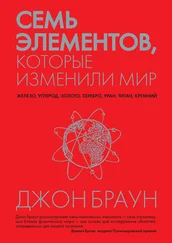
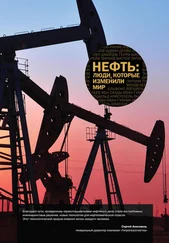

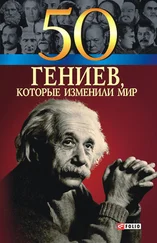
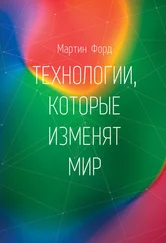
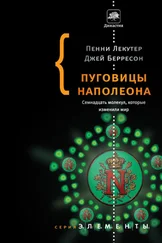

![Ясуси Китагава - Благодаря встрече с тобой. Семь свиданий, которые изменили мою жизнь [litres]](/books/438108/yasusi-kitagava-blagodarya-vstreche-s-toboj-sem-svi-thumb.webp)
